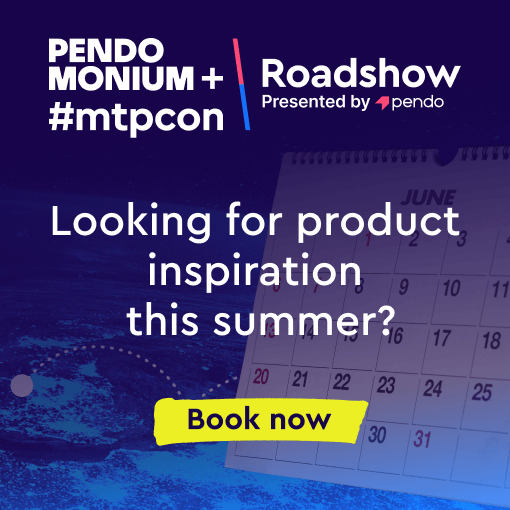We are all learning how to manage product in the internet age. There have been many successes and failures, and there are still lots more to come. Marty Cagan has worked at plenty of internet successes and failures, including eBay, Netscape and HP.
He now heads up Silicon Valley Product Group, where he works with product managers and senior leaders to help them generate value through their products. In this talk at ProductTank London, Marty highlighted the problems and opportunities he sees most regularly.
Empower Your Teams if you Want to be Truly Agile
Waves of excitement are almost always followed by a period of disappointment. Agile and Lean are both experiencing this at the moment, as they have been oversold as the solution to too many problems. (Design thinking and OKRs are Marty’s next candidates for this trough of disillusionment.) Agile and Lean are not inherently poor or incorrect, rather they’re being used to solve problems they weren’t designed for. To be effective they have to be used in the right context.
To most organisations, Agile means releasing quickly – at least every two weeks. This normally takes some automation of testing and a suite of DevOps improvements, and this is where a lot of businesses stop. But the true value of Agile comes from empowering teams to make decisions and then holding them accountable for these decisions. It takes much more than adding process or tool improvements for this to happen, and for many people, is a fundamental reimagining of how they perceive power and control.
Those companies which practise the first but not the second are IT-style organisations. Companies that buy in to the genuine empowerment that helps to solve hard problems are likely to have a product-centric culture.
Agile and Lean Won’t Solve all Your Problems
In discovery mode, we try to create solutions which are valuable, usable, feasible, and viable.
Solutions need to be:
- Valuable – Something that our customers will choose to use
- Usable – Easy to figure out how to use
- Feasible – Buildable using the technology stack and skills we have
- Viable – Workable for our stakeholders within our budget, legal, ethical, and reputational constraints
We are then trying to create products which we can plan and build a business on.
That means the products delivered need to be reliable, scalable, performant, and maintainable.
The difficulty that many companies have when adopting Agile is they try to use the same tool to deliver both these solutions.
Modern Product Figures out What to Build and Then Delivers it
To work out the right product (Discovery), we need to use product managers and designers to lead the conversation. Engineers should be involved, but the aim is to work out first what’s valuable, and then what’s feasible and viable. Engineers and Delivery then need to lead on the delivery of these products – so that they create solutions which work in the real world.
This usually means that in Discovery you’re building prototypes and through Delivery you’re creating products you can sell. Prototypes should never be that well built; they are solely for us to learn whether our assumptions are correct.
Your job is to Come up With Solutions, not to say no
Techniques for testing ideas are well documented. There are nuances, but there are many templates and tools that allow us to see if something is worth building. Most organisations get to the point of building prototypes to see if customers want to buy their solution. The vast majority of these ideas don’t work out.
This can lead to frustration in any company. The product team is seen as constantly batting back ideas from managers, saying that they don’t work. Excellent product managers realise that this is not their role. Their role is to use imagination, skill, and multiple iterations to discover solutions. This takes time to learn.
Test Ideas Quickly and Come up With Winning Solutions Fast
The majority of discovery prototypes will be created by product designers. These true partners to product managers make use of user experience, visual and interaction design skills to solve problems together.
Most analysis is a waste of time. Testing these prototypes is where we really learn what works.
CEOs Make Difficult Decisions – and That’s Your job
Most people gravitate towards the risks that they can do something about. For many product teams, these tend to be usability and feasibility risks. Value and viability are often outsourced to a senior leader or compliance team to think about because they are hard, scary, and complicated. Those who aren’t tackling difficult problems will be more likely to focus on easy-to-fix optimisations and bugs which are essentially feasibility risks.
High-functioning product teams spend the majority of their time on value risks. Effective product managers focus their time on viability. No one else in the team is concerned or expected to know about the legal constraints, privacy risks, and market conditions that affect your product.
If you want to truly be the CEO of your product, you need to deeply understand all its different dimensions. Then you make the decisions that others don’t want to.
Create With Ethical Solutions
We’ve created a lot of products that didn’t fully consider the implications for their use in ways that weren’t intended. Even worse, we’ve also created plenty of products that have caused harm when used in exactly the way we designed.
We need to ask ourselves not just will our product work if we build it, but should we build it at all?
Ultimate responsibility for these decisions sits with the leader of an organisation. However, it is invariably a product manager who first spots the problem. You need to be brave and raise the issues when you see them. You still need to come up with solutions – better ways of doing things that don’t have the negative effects on society or your organisations as the alternatives.
Focus on Value Creation
Founders tend to be brave. They know everything that’s been tried, so they know what’s important and what can be ignored. Many product teams don’t have all of this information – and so they worry about changing something that could have a highly negative impact. This forces them to be risk averse – ignoring any bold choices.
Product teams that are on the offensive stop focusing on value-capture activities and focus their time on value creation for both their customers and company.
Startups have no reputation, history, or customers so are able to focus solely on value creation. There’s very little downside to the risks and gambles that they take. Established companies still need to take these risks, but in a smarter way.
Protect revenue. Protect our customers. Protect reputation. Protect our colleagues.
If you can achieve this, then you’ll be able to generate value, while still making bold choices.
Optimisation is not Discovery – you Need Both
Small, low-risk, targeted tests are good work for product teams. They allow us to learn what works, what doesn’t and what makes no difference.
Driving conversion rates by the incremental optimisation of a funnel can provide real benefits for an organisation. But, it won’t give you step changes in the amount of value you create for your customers or company.
This is the point of Discovery. If you’re running A/B tests in this mode, then you need to make bigger bets. This probably means you send fewer people to the new versions. If you’re comfortable sending 50% of your traffic to this option, then the tests probably aren’t big enough.
You Need Data and Customer Insight to Make Good Decisions
Some companies have a reputation for being data-centric, while others pride themselves on their customer insight. In reality, all organisations need both types of information to make good decisions. Data-led testing tools give us a straight answer if something works, but they can’t tell us why. We have to speak to customers to find this out. We take this insight and develop bigger tests to see if we have interpreted it correctly. From here we create value for our customers and organisations.
Think About the Alternatives
Empowered product teams are given problems to work on and come up with ideas to solve the issues they face. Effective teams don’t just focus on one way to tackle the problem. They look at different ways to approach an issue and run quick tests to generate insight to inform which route is worth pursuing more deeply.
Teresa Torres’ Opportunity Tree approach helps teams do this at scale, while focusing on customer needs. You can see her seminal Mind the Product session on this topic from 2017 here.
Coach Product Managers to Improve Competence
Most companies are only as good as the product they sell, and product teams are only as good as their product managers. If all these approaches aren’t implemented, it’s usually because of a lack of competence of the product manager involved. This is not their fault. It is down to their manager who hasn’t helped them to develop their practice.
Directors / heads of product should be judged by their weakest product manager. Their #1 responsibility is to coach them, and the rest of their team, to be more effective in their role.
The core capabilities of these product managers should be:
- Deep knowledge about your users and customers. If the CEO wonders who to talk to about their customers, they should immediately think of you. You have to get in front of customers and build relationships to understand their challenges. It takes more than a handful of conversations and you need always to be learning.
- Deep knowledge of your data. User analytics, sales analytics, and your data warehousing should all be part of your daily routine to get on top of how your product performs.
- Deep knowledge of the industry. You have to learn a lot about the context in which you operate. This means becoming an expert in the things your users understand and spend their day discussing – including competitors and trends.
- Deep knowledge of your own company. You have to understand all the dimensions of your business. Sales, marketing, services, security, privacy, funding should be some of the areas which you become expert in – areas that others in your team don’t have to worry about.
This process can and should take two or three months for a new product manager.
You can see how Marty suggests leaders can help to coach their product managers through his coaching tools on the SVGP blog. Start with understanding where they are and then help them get better at the areas they need support in.
Product Management Includes Product Ownership and Much More
The hard part of our role is not administering Jira. The hard part is working out what should go in the backlog to begin with. Managing the rituals related to Scrum, Kanban, or the like is important. However it’s only about 5% of an empowered product manager’s role. The rest is everything discussed above!







Comments 4